Content
It is difficult to imagine a housewife who would not allocate at least a small piece of her garden for cucumbers. More often they occupy a substantial area, freely spreading their lashes along the ground or raised on a trellis. If there is a greenhouse on the site, then its indispensable inhabitants will be the same cucumbers. Cucumber Rodnichok f1 is a variety that we always return to after trying many new products. And although Rodnichok is a hybrid of an old, Soviet selection, even the most modern varieties cannot compete with it in terms of taste, yield and disease resistance.
Description of the variety
The cucumber variety Rodnichok is a mid-season variety, pollinated by bees; the first harvest is harvested 50-55 days after emergence, starting in the second half of June. The main harvest occurs at the end of summer. You can grow cucumbers of the Rodnichok variety both in open ground and under film or in a greenhouse. The scourges are long, reaching 3 m in length, weakly branched.
This variety has a light green fruit weighing 90-110 g, with white stripes on the sides and sparse black thorns. A characteristic feature of Rodnichok cucumbers is that their fruits are even, approximately the same size, 9-12 cm long. The product characteristics are very high, the cucumbers are tasty, crispy, and not bitter. They do not turn brown for a long time, can easily be transported and rarely get sick.The yield of Rodnichok cucumbers in open ground is 5-7 kg per square, in a greenhouse where they grow on a trellis - 17-25 kg.
The description of the variety will be incomplete if we do not note that Rodnichok cucumbers are invariably in high consumer demand and are among the most expensive in our markets. The undoubted advantages of Rodnichok cucumbers include:
- They grow both in open and closed ground;
- Suitable for canning and salads;
- High taste qualities;
- Excellent transportability;
- Attractive appearance;
- No bitterness;
- Disease resistance;
- Duration of storage without loss of taste and commercial properties.
In addition, if you grow Rodnichok cucumbers for sale, there is no need to calibrate them - they grow even, beautiful and almost the same size.
In our opinion, the variety has no disadvantages.
Cucumber care
All cucumbers, including the Rodnichok F1 variety, give preference to:
- Well-drained, manured neutral soils;
- Frequent watering with warm water;
- Moist, warm content;
- Weekly feeding;
- Good lighting.
What not to do:
- Transplant from place to place;
- Plant in acidic, dense soil;
- Water with cold water;
- Plant in an area exposed to the wind;
- Leave without shelter during cold weather;
- Weed with a hoe.
Caring for cucumbers of the Rodnichok variety may seem somewhat tedious, but without it it is impossible to achieve high yields.
Seed preparation
If cucumber seeds are covered with a colored shell, they cannot be soaked or heated - this will damage the shell. Even if there is no shell, the Rodnichok variety does not need long-term heating - almost all the seeds of this variety are female.They are warmed up before planting for a short time only to destroy possible pathogens, and then soaked for swelling or germination.
Landing rules
If you are planting cucumbers of the Rodnichok variety in greenhouses, take loose, well-manured soil for growing, add additional ash. In open ground, you must first prepare the area - dig it up, remove all the stones, roots weed, add well-rotted cattle humus. If necessary, add dolmite flour under digging or directly into the holes.
The holes can be placed in a square nesting manner at a distance of approximately 30x30 cm if the cucumber vines lie on the ground or in a row at a distance of about 15 cm from each other when grown on a trellis.
If you are a resident of a region with a cold climate and in order to get a harvest you are forced to grow Rodnichok cucumbers through seedlings, do not forget that they do not like transplants. Immediately plant the seeds in peat tablets or take a container from which the seedlings can be easily removed without disturbing the roots. This video will help you with this:
Plant 2-3 Rodnichok cucumber seeds in each hole, deepening them one and a half to two centimeters. Pour warm water from a watering can over the planting generously and carefully, so as not to wash the seeds, and cover them with covering material.
Typically, the shoots of the Rodnichok cucumber appear very quickly, 2-4 days after planting.
Watering and fertilizing
In Rodnichok cucumbers, however, like all cucumbers, the nitrogen: phosphorus: potassium requirement ratio is 34:13:53.This means that the plant loves potassium and must either be added additionally with ash, or fed with special fertilizers for cucumbers, where the manufacturer has already taken care of the necessary balance of nutrients.
Cucumbers love fresh manure, but it can only be given as an infusion. It is prepared simply - dissolve about a liter jar of fresh manure in a bucket of water, let it ferment for 10-14 days, mix with water in a ratio of 1:10.
Watering cucumbers should be frequent, abundant and done only with warm, preferably soft, water. But overdoing it with watering is also dangerous - if water constantly stands at the roots, they can rot. This most often happens in poorly drained soils or in cool weather.
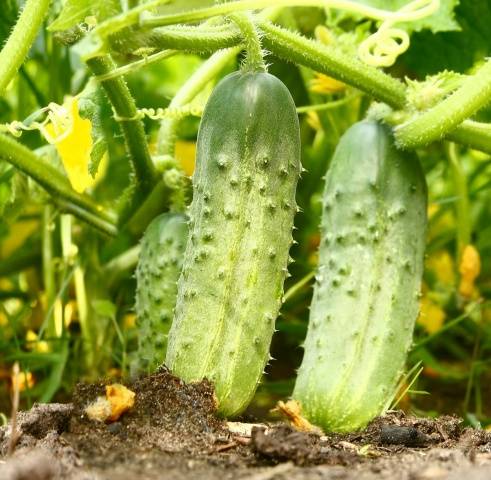
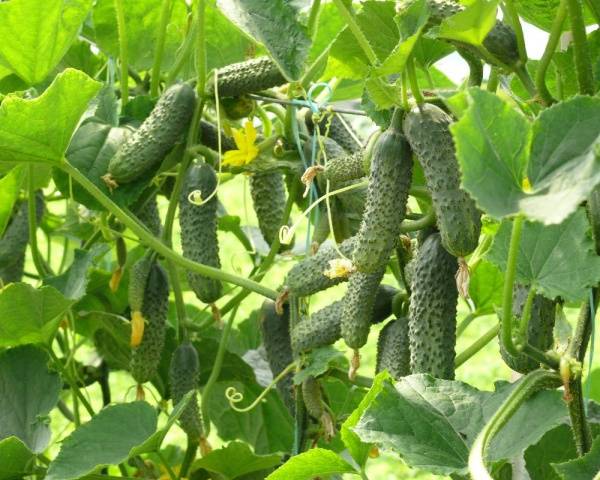
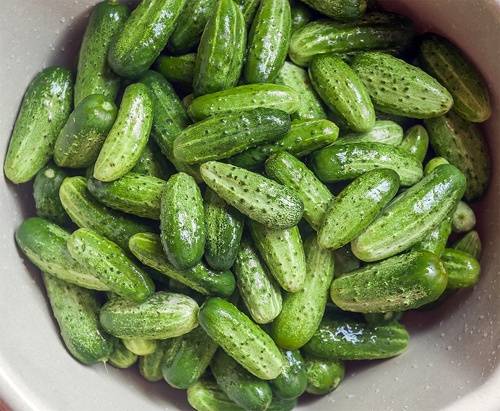
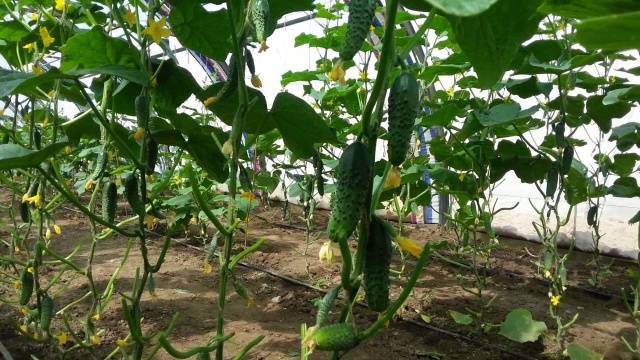
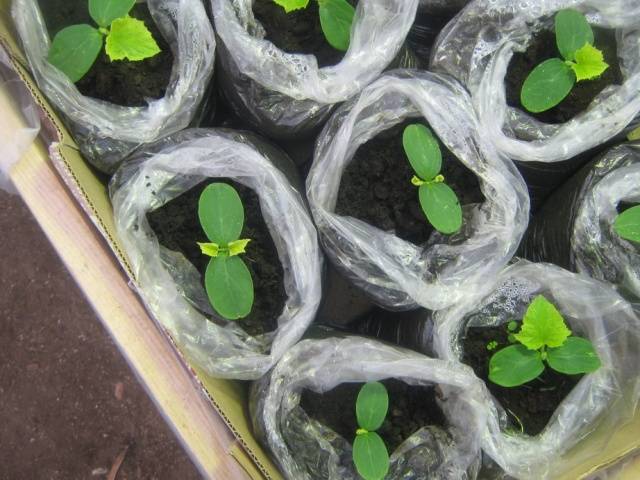
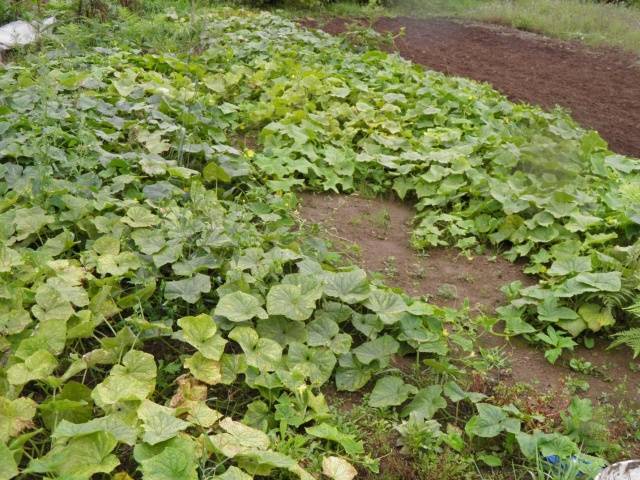
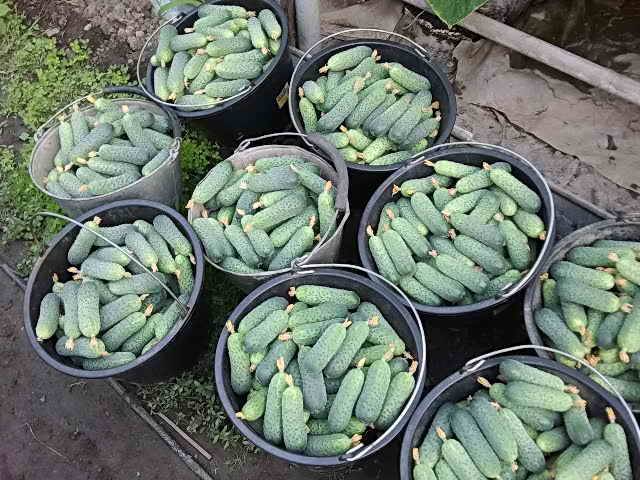






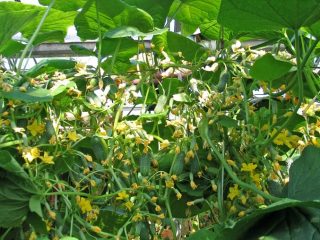


Intelligent, detailed, intelligible - thank you. The days for planting seeds for seedlings are not indicated - it’s a shame...